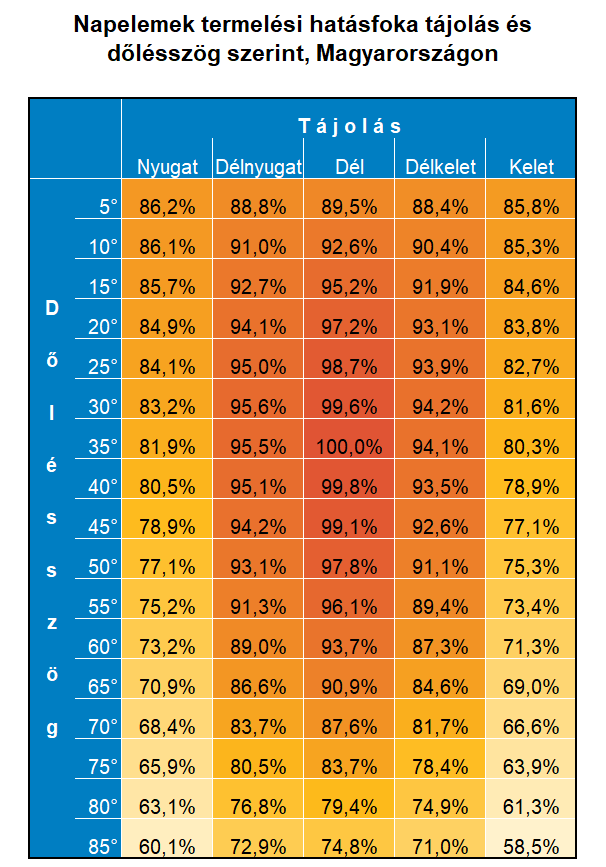Before installing a solar panel system, many people stop, saying that it is not possible to put the panels on their roof anyway. A short rebuttal to rooftop installation concerns is: well, but. As experts, we offer available options for all types of roofs, so maybe it doesn't matter what kind of roof it is.
Orientation, roof type, structure, material - many, many variables that might make you think that it is definitely not possible to install it on certain properties. However, with our many years of professional experience, we can confidently state that the solar panel system can be installed on almost any type of roof. Of course, there are cases where a unique support structure may need to be used, ready installation it takes more time or preliminary work is required, but nothing is impossible.
Installation on the roof begins with an accurate survey
After we receive the installation request - request for quotation - within a few days we will go to the location to assess the possibilities and based on this, give the interested party a more accurate schedule and price calculation. We use it during the on-site survey the HelioScope design software also, based on its calculations, the position of the panels and the conditions for installation on the roof, as well as the expected annual energy production, can be determined.
Then we examine the static condition of the roof structure, the condition and material of the covering, that is, what are the options.
At Yuxta, we recommend installing the solar system on the following roofs:
- burnt earthenware,
- concrete tile,
- shingle,
- corrugated board,
- trapezoid plate,
- flat roof
Perhaps, if the roof is not suitable for solar panel installation at all, ground installation is also possible.
The following factors are important when installing
The angle and orientation of the roof
The most optimal case is if the roof is oriented to the south, with an inclination angle of 30-35 degrees. This does not mean that all other orientations and angles are out of the question - they just need to be designed differently.
If the orientation and the angle of inclination deviate from the ideal, the expected annual energy production is reduced. If, say, a customer has a saddle roof that is oriented east and west, but still has a 35° tilt angle, the system will produce 20% less than the ideal. If the orientation is south, but the angle of inclination is only 15°, the production will be 5% less compared to the ideal.
Helioscope helps us to calculate the expected yield, but we also have a "matrix" for this, in which, depending on the orientation and the angle of inclination, you can find out how much worse the expected yield will be compared to the ideal.

What to do in the case of a flat roof?
Installation on the roof can also work in this case, but a type of support structure is needed that can be used to set the panels in the right direction and angle. In such cases, it is possible to create an absolutely ideal orientation and angle of inclination, but in practice we usually use a south 10-15° arrangement, or an east-west orientation, also 10-15°. Since the rows of solar panels must be shaded from each other and there must be a row gap between the rows, it is not worth using an inclination angle of 30-35°, because then there will be a lot of unused surface on the roof (row spacings of 1 meter should be used). If a lower angle of inclination is used, the row spacing is also smaller and more panels can fit on the same surface, thus more production. Here you have to find the ideal state.
If the roof of the house is not suitable for receiving the panel, the roof of the terrace, the garage, or even another outbuilding can be used as option B.
Shielding
The solar system works optimally when the panels are perpendicular to the sun's rays and do not encounter shadows. There aren't many such ideal conditions, so as professionals we work with the possibilities.
Basically, we do not install solar panels in shady places. If it is still necessary to install so many solar panels on the roof that some of them are in the shade, in most cases an optimizer must be used (or plan the solar panels in a row so that the shaded panels are placed on a string, it depends on the location and the shadow effect). The optimizer helps to reduce the negative effect of the shadow.
Roof structure condition
We also come across roofs in poor condition that require minor repairs or roof replacement before installation on the roof. If the roof is technically unsuitable and it takes too much time and money to repair it, then the solution of installing it on the ground can also be considered.
Ground installation
When should we choose a ground installation solution? We typically see this at industrial sites, or at properties where the roof structure is not suitable for receiving solar panels. Its advantages include the fact that it can be expanded more easily, the maintenance and cleaning of the panels is less complicated, and it can be installed more easily and quickly.
The solar system must be designed and sized for the properties of the given property, taking into account the environmental effects. An ideal state is almost nowhere to be found. Unfortunately, the fact that there will be a solar system on the roof is not taken into account when designing newly built houses, so it is important to choose an expert who works taking the above into account.
Are you looking for a contractor to install a solar panel system? You can count on our experts! Whether it is residential or corporate installation, ask for our unique offer and assessment by filling out our form.
